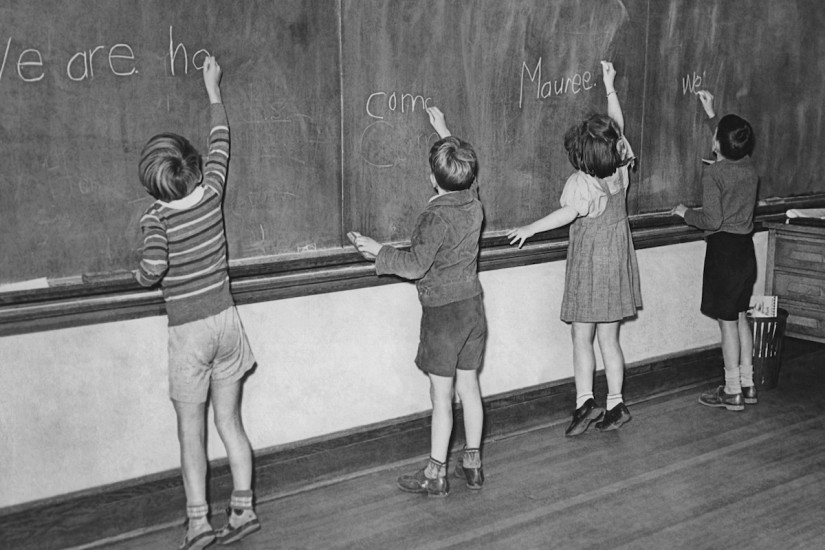Most attention on the tax legislation enacted last month has focused on its impact on Americans’ wallets. But it was also a victory for school choice and a massive blow to public education.
It initially included measures to benefit home-schooling families and the final version benefited those who use private schools while eroding the state and local sources that fund public schools. The financial strain to the public schools caused by the loss of that revenue is well documented. The long-term harm to the nation is less evident, but no less profound.
Public schools were established to knit together the civic fabric of our democracy. They never fully succeeded in that task, but as our discourse becomes increasingly poisoned and our political divisions seem to grow deeper with each passing year, we need them to do so more than ever. Unfortunately, these same developments make Americans more resistant to restoring and completing this original vision for our schools.
Legislation like the tax bill, which threatens the funding base for public schools and encourages private schooling, promises to exacerbate these problems and poses a real danger to American democracy.
America’s founders understood that the American experiment would fail if citizens did not hold a common vision for the greater good. The need for a shared civic culture became urgent by the 1830s as ethnic and ideological conflicts produced violence in America’s streets. One of the most effective antidotes to this disunity was tax-supported “common” public schools. America’s public schools were founded to educate citizens and bring diverse Americans together to instill a common vision for the nation.
In the 1800s, Ohio’s Calvin Stowe argued that “to sustain an extended republic like our own, there must be national feeling, a national assimilation.” Michigan’s schools superintendent envisioned public schools as places where “the rich mingle with the poor.” And to a great extent, the common schools succeeded in doing just what their champions had hoped — inculcating a common set of values across class and geographic lines.
But from the very beginning their success was far from complete. The common school vision notably excluded Native Americans, blacks, Mexicans and Asians. After the Civil War, Reconstruction governments proclaimed the radical ideal of a biracial democracy with equal access to education, but this aspiration foundered on the rocks of American racism.
Dating back to the Civilization Fund Act of 1819, which provided federal funds to support schools for the purpose of “civilizing” Native Americans, segregated schools for minority groups had been part of the American educational landscape. By 1870, they were joined by Negro Common Schools.
Many Asians and Mexicans also attended segregated schools, until the landmark case Mendez v. Westminster in 1947 allowed Mexican American children to attend white schools in Orange County, Calif. That victory laid the groundwork for the most important educational desegregation victory: Brown v. Board of Education in 1954.
Although the Supreme Court’s decision did not trickle down to local schools for decades, it had a positive effect — albeit one that now looks temporary.
American schools reached peak desegregation in 1989, but the trend has since reversed as the Justice Department releases districts from judicial oversight.
Recently the Government Accountability Office reported that K-12 schools where 75 to 100 percent of the students were black or Hispanic grew from 9 to 16 percent. For the first time, the percentage of students in American public schools who are white dipped below 50 percent in 2014. Yet today, it is the white students in public schools who have the least exposure to students of other races.
While some might view this reality as a failure of the hope that common schools would bring citizens together, it instead underscores that this vision was never fully implemented. Indeed, many Americans have lost faith that we can share a common civic culture. Religious minorities on the right want to opt out or use vouchers to attend faith-based schools. Advocates of multiculturalism on the left question whether schools should impose any kind of common culture in a diverse society.
At the same time, the core purposes of education have been cheapened as we focus on producing workers rather than citizens. Education is seen as a private rather than public good. Parents demand a choice in their children’s education because they believe future success, defined in financial terms, is dependent on it. Among the relatively well off, the educational arms race begins early and does not let up until a child is launched into a successful career.
America needs to reclaim a fuller and more inclusive vision of the founding purpose for public education. As deep divisions and extremism shake democracies around the world, public schools must serve as a unifying force. That is why jeopardizing their funding is exactly the opposite of what we need today. The American experiment is under considerable strain. Rather than give up, we must finally implement the ideal of common schools that bring all Americans together for the sake of our nation, and of the world.
